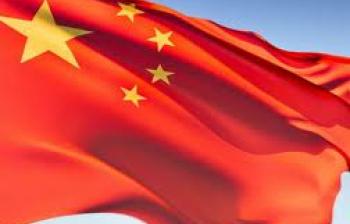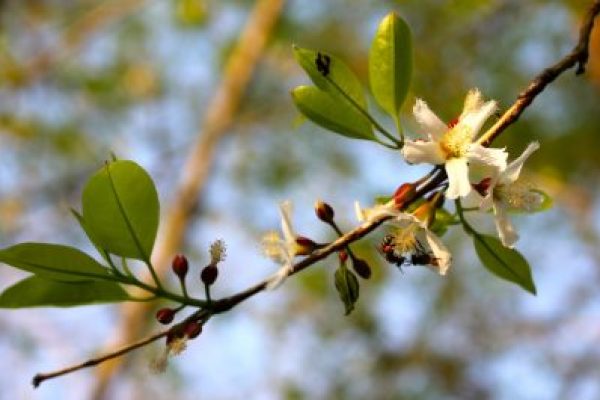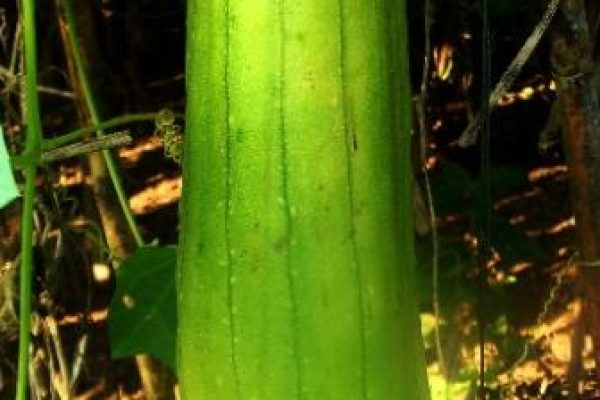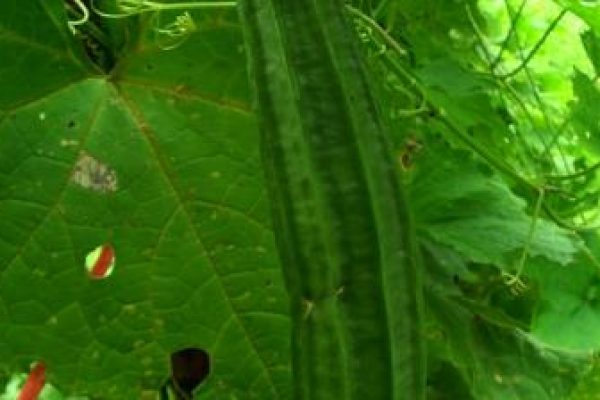
As in many other countries in Asia, Chinese organic agriculture is based on traditional sustainable farming practices that existed thousands of years ago. In China, for example, records of sustainable farming dating back 4,000 years mention several organic practices including crop rotation, composting and diversified production.
The Green Revolution in China in 1980s occurred much later than in other East and Southeast Asian countries due to the economic sanctions imposed by western countries after political change in China in 1950. The Green Revolution was driven by the Chinese government to increase agricultural productivity, with the main aim of ensuring national food security. Cheap agrochemicals manufactured by local Chinese factories with subsidies from the government, together with improved irrigation and high-yield varieties, allowed the Green Revolution to expand and penetrate all parts of the country, even remote areas. However, within a decade the environmental impact of agrochemicals was apparent, with soil becoming degraded and water polluted. As a result, agrochemical residues in food products, especially fresh food, became a major concern among Chinese consumers and policymakers.
By the late 1980s, some local government bodies concerned about the environmental began promoting what was known as Chinese Ecological Agriculture. This eco-farming gave rise to organic agriculture. Seeing opportunities in the growing global demand for organic foods, other government bodies began to promote organic farming. One such agency was the Rural Ecology Sector of the Nanjing Institute of Environment Science (NIES) of the State Environment Protection Administration (SEPA, now known as the Ministry of Environmental Protection, or MEP). This agency became a member of the International Federation of Organic Agriculture Movements (IFOAM) and started to promote organic farming in its state in 1989.
The main drivers of modern organic agriculture in the early period were Chinese enterprises, both state-owned and private, which were contracted to produce organic products such as Chinese tea to be exported to European countries. The first certified organic tea was in the Lin’an County of Zhejiang Province, inspected and certified by Dutch certifier SKAL, and exported to Europe in 1990. Most of the early development of Chinese organic agriculture was driven by export opportunities in the European Union and United States, and later on Japan. This also led to the proliferation of organic certification bodies, both local organizations and overseas offices of foreign agencies. The first local organic certifier was the China Organic Food Development Center (OFDC), which was established in 1994 by the NIES.
Meanwhile, concerns about food safety for both export and domestic markets led the Chinese government to introduce food-labelling schemes, comprising two levels – pollution-free food and green food. Local governments first introduced such schemes in the mid 1980s and these were later taken up by the central agency, the Ministry of Agriculture (MoA). Pollution-free products comply with basic food safety standards and green food, while similar, follows some stricter standards. The MoA established the China Green Food Development Center (CGFDC) in 1992 as a public certification body. Initially, CGFDC focused on food safety certifications but it later extended its scope to include organic certification.
Another important turning point for the organic sector came in the early 2000s, when national regulations for certification and accreditation were introduced. In the same period, the Chinese domestic organic markets began to grow more rapidly, with the emergence of new middle- and upper-class consumers.
Key milestones of organic agriculture in China
| Year | Milestone Event |
| 1989 | * The Rural Ecology Division of Nanjing Institute of Environmental Sciences, SEPA, became the firstIFOAM member in China, initiating the organic movement in China |
| 1990 | * The first certified organic tea (by SKAL) was exported to EU |
| 1992 | * China Green Food Development Center (CGFDC) was established by the Ministry of Agriculture to provide certification services for green foods |
| 1993 | * CGFDC became IFOAM member |
| 1994 | * Organic Food Development Center (OFDC) was established by Nanjing Institute of Environment Sciences to provide organic certification services and OFDC published its organic standards |
| 1995 | * State Environmental Protection Administration (SEPA) issued the “Regulations on Administration of Organic (Natural) Foods Labeling” * GGFDC introduced “AA-Grade Green Food” as an organic food labelling scheme * OFDC became the OCIA Chinese Chapter and started the joint certification of Chinese organic products |
| 2001 | * SEPA issued Organic Food Certification and Management Measures * CNCA was established by the State Council of China in August 2001 |
| 2002 | * SEPA established “State Administration Committee for Organic Foods” in February. In March it issued two more regulations, “Basic Accreditation Requirements for Organic Food Certifiers” and “Registration Norms for Organic Food Certifiers” * OFDC was accredited by IOAS under IFOAM Accreditation Programme |
| 2003 | * CNAS issued the “Basic Requirements on the Accreditation of Organic Certifiers’ Certifications to Organic Agricultural Products and Processing” and the “Implementation Guidance on the Establishment of Certification and Accreditation System for Agricultural Products”. * Certification and Accreditation Administration of the People’s Republic of China (CNCA) was authorized by State Council for the administration of national certification and accreditation |
| 2004 | * “Regulatory Measures on Organic Product Certification Management” were introduced by the State General Administration of Quality Supervision, Inspection and Quarantine in September * Eleven ministries from the central government of China, including the Ministry of Commerce, the Ministry of Finance and State Environment Protection Administration, jointly issued “Recommendations on Promoting Organic Food Industry Development”, the first national policy on organic agricultural promotion * More than 20 domestic organic certifiers were registered by CNCA in China |
| 2005 | * “National Standard of the People’s Republic of China: Organic Products” (GB/T19630-2005) was introduced in January. taking effect in April. In June CNCA issued “The Rule on Implementation of Organic Products Certification” * China’s first organic products exhibition was organized by OFDC and Jialing Exhibition Corp., Ltd. and held in Shanghai * The first Organic China Expo organized by Sunry Advertising and Exhibition under the support of the Ministry of Commerce was held in Beijing * Five foreign organic certifiers were approved by CNCA to operate legally in China |
| 2007 | * The first BioFach China was organized by Nuremberg Messe and China Green Food Development Center in Shanghai |
| 2008 | * CNCA applied to be listed in the EU third country list and negotiated with EU Commission on this issue |
| 2009 | * CNCA organized expert meetings for the revision of “China National Standard for Organic Product”, with the new version of the national standard due to be issued in late 2010 * The Technical Committee of Chinese Organic Certification was founded on 14 December, 2009 |
Organic Productions
Unlike in other developing countries with free market systems, China’s organic production is mostly based on organized systems rather than farming by individuals, and there are very few individual organic farmers in China. There are 3 main organic production models adopted by companies and producer associations. Under the first, known as firm leasehold management, an organic processor or trader leases land from farmers and this company then manages the farm production. Farmers are paid rent and become farm workers on the company’s leased land. The second model is known as company plus base plus farmers. The processor or trader sets up an organic production project in cooperation with a local agent or government in a village or township. Farmers in the designated project areas are asked to convert to organic production in line with the firm’s demand, and the local government signs a long-term contract with farmers for organic production and purchase. Third is the organic production association, under which the village administration or the farmers themselves organize organic producer associations. The association manages and provides technical support to producer members and buys back their produce, which it then sells to processors or traders.
With such organized production, there are only a few thousand certified organic farms in China. An estimate of over 2,500 certified organic producers (with more than 100,000 individual farmers) in 2007. Regarding acreage, it is estimated that about 2 million – 3 million hectares of farmland is certified as organic, putting China among the world’s top five organic producers, in acreage terms. Statistical data on Chinese organic production, however, vary from one source to another. Table below shows estimates drawn from various sources (unit in ha).
| Year | Wild Harvest (ha) | Aquaculture (ha) | Total (ha) | |
| 2000 | n.a. | n.a. | 62,000 | |
| 2001 | n.a. | n.a. | 156,000 – 301,000 | |
| 2002 | n.a. | n.a. | 253,000 | |
| 2003 | n.a. | n.a. | 299,000 – 619,000 | |
| 2004 | n.a. | n.a. | 629,000 – 3,467,000 | |
| 2005 | n.a. | n.a. | 2,300,000 | |
| 2006 | 2,080,000 | n.a. | 2,300,000 – 5,280,000 | |
| 2007 | 759,000 | n.a. | 1,553,000 – 4,100,000 | |
| 2008 | 759,000 | 415,000 | 3,027,000 | |
| 2009 | n.a. | n.a. | 2,030,000 |
Although the statistical data vary, it is clear that there was a major expansion of Chinese organic agricultural production in the mid 2000s, when acreage jumped from hundreds of thousands to a few million hectares, with significant contributions from wild harvests and aquaculture.
In terms of geographical distribution, from the start most organic farming has been in the eastern and north-eastern parts of China. The highest concentration of organic farms is found in Inner Mongolia (northeast region), Jilin (northeast region) and Yunnan (southern region). In 2004 and 2005, new organic projects, especially organic animal husbandry, grew rapidly in the western part of China, reflecting the government drive known as the Grand Campaign of Developing the West. But due to a lack of market information and platforms, organic animal husbandry declined in following years, and there was a dramatic drop in acreage of certified organic land (mainly organic pasture land) in this region.
Data on the type of organic products in Chinese is also lacking. However, it is likely that Chinese organic farming includes most products, with the exception of a few tropical fruits and vegetables. China has a wide range of agro-climatic conditions that allows production of a wide range of crops and animals.
Due to the lack of statistical data, it is not possible to estimate the volume and value of Chinese organic production. The following provides a partial picture of some Chinese organic production, in terms of quantity and value, in various years:
- In 2006, certified organic tea farms covered 200,000 hectares, producing 13,000 tons, 6,000 tons of which was for export. In 2007, production was 15,000 tons, 7,000 tons of which was for export.
- In 2006 China’s organic output, from 2,300 enterprises covering 5.28 million hectares, was 3.85 million tons. In 2006, 68% of organic products were grain crops and horticulture products, 8% were meat and milk, 8% were aquaculture, 7% were beverages, and 8% were other items.
- In 2003, the total value of organic products certified in China was about US$ 200 million.
- Of the total RMB 2.2 billion in China’s organic production in 2004, about RMB 1.2 billion was exported, with only RMB 200 million going to the domestic market, and RMB 800 million sold as conventional produce.
- In 2008, the total value of organic production reached about RMB 16 billion (US$ 2.4 billion), with exported organic products exceeding US$ 500 million and the domestic organic market reaching US$ 1.1 billion. The remaining US$ 800 million in organic products were sold as conventional products. This is based on an estimated 900,000 ha of cropland, 950,000 ha of pastureland, 410,000 ha of aquaculture area and 760,000 ha of wild collection.
[from International Trade Centre (2011), Organic Food Products in China: Market Overview, ITC, Geneva.]



